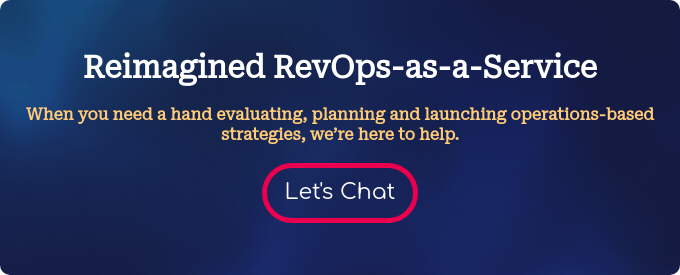Selling is an art. Selling is human. Selling is unpredictable. Yes, and selling can be anything but successful.
This might be a familiar story. Whether you’re a sales leader or a sales rep, you might find the team spends more time trying to figure out which version of the PowerPoint deck is the right one to use, writing the same kind of email over and over, or even cleaning up data than actually selling and talking to prospects. And when the team does have all of the right tools, fitting them into an organized, repeatable process is still another challenge.
Enter Sales Ops.
Where to Find What You Need
- What is Sales Operations?
- Misaligned Buyer Persona Definitions
- Lack of Understanding of Ideal Customer Profile
- Undefined Lead Statuses
- Unclear Lifecycle Stages
- Gaps Among Training, Expectations, and Day-to-Day Work
- Non-Automated Lead Routing
- Incomplete Information
- Unclear Reporting
- Too Much Admin Work; Not Enough Brain Work
What is Sales Operations?
Channing Ferrer, VP of Sales Strategy and Operations at HubSpot, describes Sales Ops as a way to “plan, organize and enhance the sales organization in an effort to maximize productivity.”
In fact, Sales Ops strives to mitigate sales unpredictability by analyzing efficiency, optimization, automation, and team members. The outcomes are tactical improvements and support plus updated strategy and design.
You may have also heard of Sales Enablement, which is different but complementary. Sales Enablement takes the strategy created by Sales Ops and puts it into action with training and materials.
While the title of Sales Ops seems to only involve…sales, effective sales operations should also connect to marketing. This connection ensures leads are actually qualified and that the team can manage those leads effectively.
How to Use HubSpot to Solve Sales Ops Pain Points
Sales Ops starts by looking at the pain points of your sales process, so let’s do the same.
1. Misaligned Buyer Persona Definitions
Buyer personas, semi-fictitious representations of your typical buyers, help align marketing messages with purchase triggers. If your marketing team and your sales team don’t agree about who these buyers are, your lead qualification process is likely disjointed.
Strategic Fix
Every team at your organization knows a lot about your buyer personas. If you have existing personas, start the process of reviewing and enhancing them. If you don’t already have personas, start by creating them as a collaborative project. Here’s some buyer persona-building guidance to get you started. Remember, your personas don’t have to be - and often are not - job titles.
HubSpot Setup
“Buyer Persona” is a built-in field in the HubSpot contact record. If you’re not using it as part of your lead segmentation and identification efforts, it’s time to start. Straight from the HubSpot Knowledge Base, here’s how to set them up.
When creating the personas:
- Be sure to set the “description” of your buyer persona to be a public-facing statement. You’ll want this for forms later!
- To make your personas memorable, a little alliteration goes a long way. Stressed Salesperson Susan is a lot easier to remember than Anxious Salesperson Mike.
When you create buyer personas in HubSpot, a few magical things happen:
- You now have a form field that helps your users self-identify and tells you how they see themselves.
- HubSpot automatically deploys lists that are a combination of lifecycle stages and personas in your portal - instant segmentation.
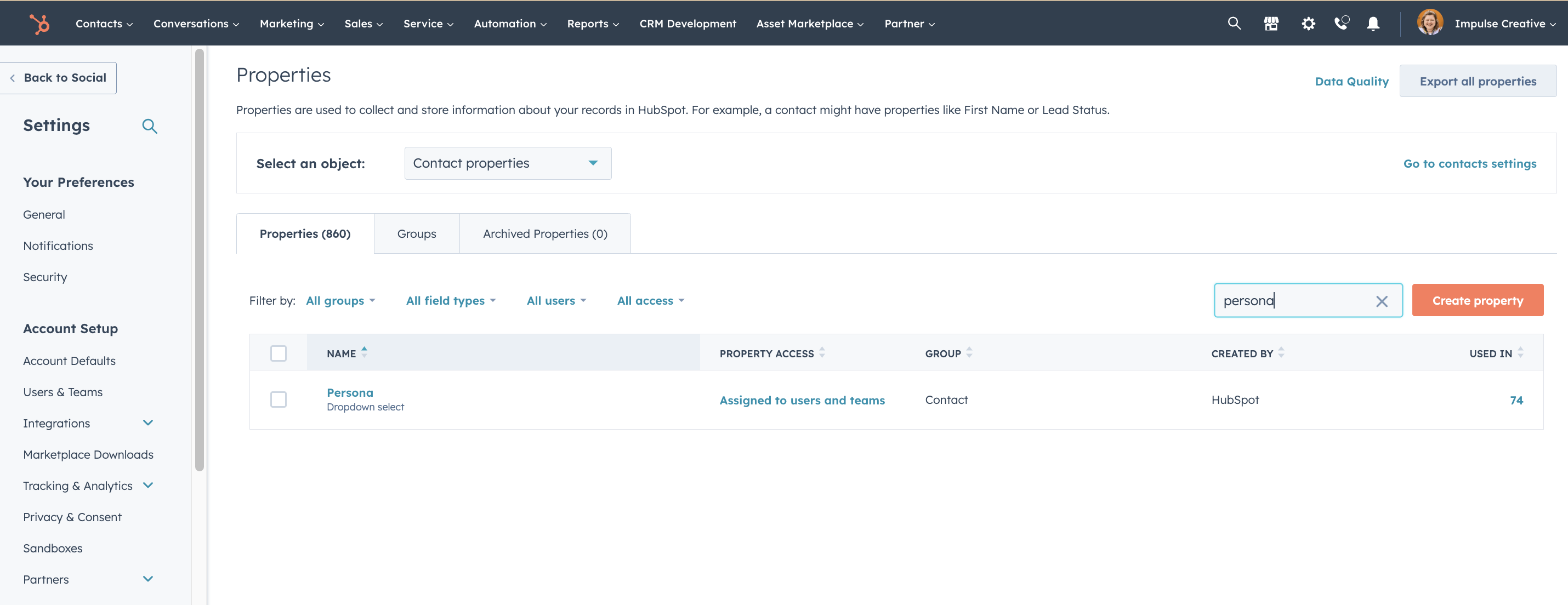
Where to find the persona property in your settings.
.png?width=725&height=634&name=Persona%20Property%202%20(with%20redactions).png)
Examples of alliterative personas.
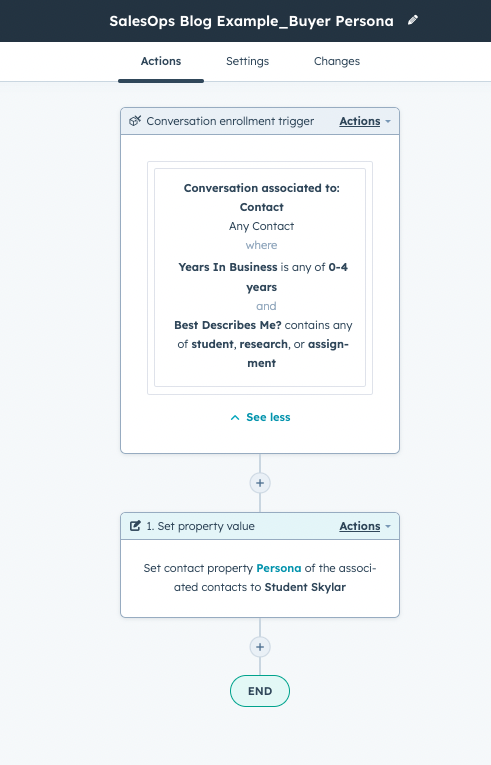 Example workflow to set personas based on certain demographic criteria.
Example workflow to set personas based on certain demographic criteria.
2. Lack of Understanding of Ideal Customer Profiles
Unlike your buyer personas, which represent individual buyers, ideal customer profiles (particularly in B2B organizations) represent ideal purchasing entities. You may have multiple buyer personas as one customer. If you don’t understand or haven’t defined ideal customer profiles (ICPs), a similar misalignment between marketing targets and sales needs can emerge quickly. If marketing is sending small business leads to enterprise sales reps no one will feel successful.
Strategic Fix
Particularly if you’re selling to other businesses, defining the type of customer you are a best-fit solution for is an important step. To define ICPs, start by asking:
- What kinds of companies benefit the most from our solution?
- What are the firmographics of those companies?
- What kinds of companies are we a poor fit for?
- What kinds of companies tend to have the highest value for us?
HubSpot Setup
HubSpot doesn’t have a built-in field for ideal customer profiles the way it does for buyer personas. However it does have the flexibility to add properties to suit your needs - that means you can add an Ideal Customer Profile property to the company object and use it similarly to the buyer persona property.
To help “set” the ICP on the company record, be sure to collect relevant firmographic information for form submissions. Then, use a workflow to update the ICP property when the relevant information is known.
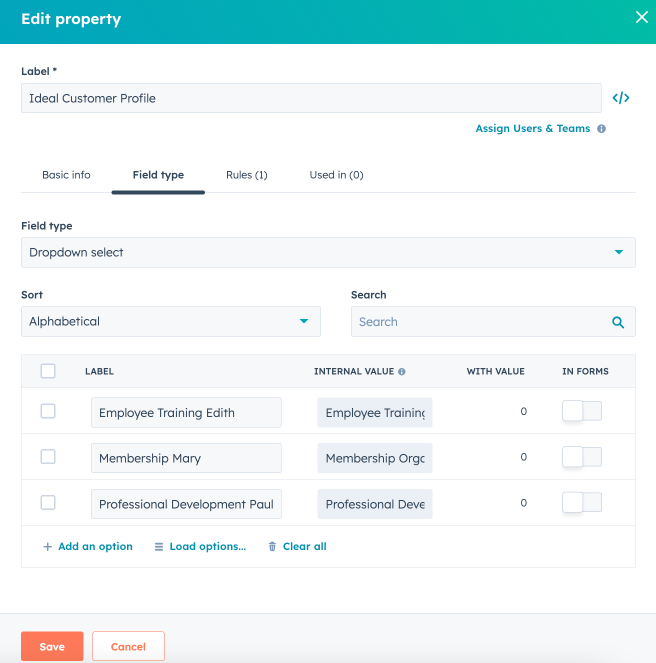
An example of a company property for ICPs.
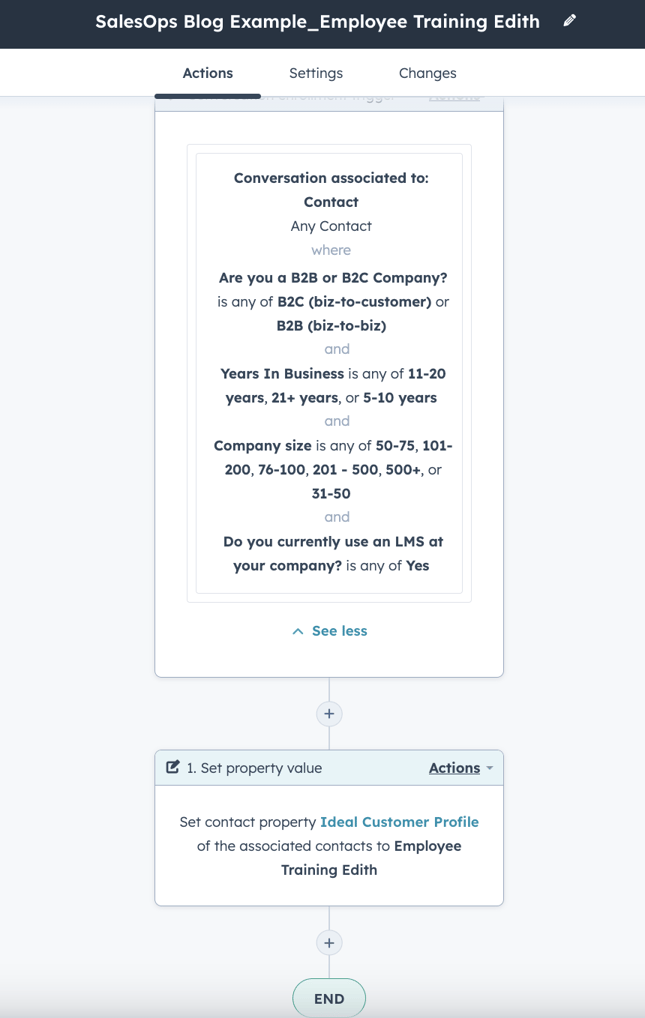
An example workflow to set the ICP property based on certain criteria.
3. Undefined Lead Statuses
Lead statuses give your team clear delineations of what makes up each stage, help improve reporting, and increase timely action & momentum. In HubSpot, the property “Lead Status” is intended to be used to track the status of sales-qualified leads (SQLs). HubSpot documented and defined these statuses here.
Strategic Fix
Lead statuses will ultimately be customized based on the steps in your sales process. With that process mapped out your team must be aligned on the following to use lead statuses effectively:
- What qualifies as stalling out or simply a pause? What will propel a contact forward?
- How many times should you contact the leads until they are unqualified?
- What are the reasons that unqualified them?
HubSpot Setup
Good news - this one comes to you right out of the box. If you need to customize lead statuses for your organization, you can always add, remove, or modify them - simply go to the property editor and adjust your options.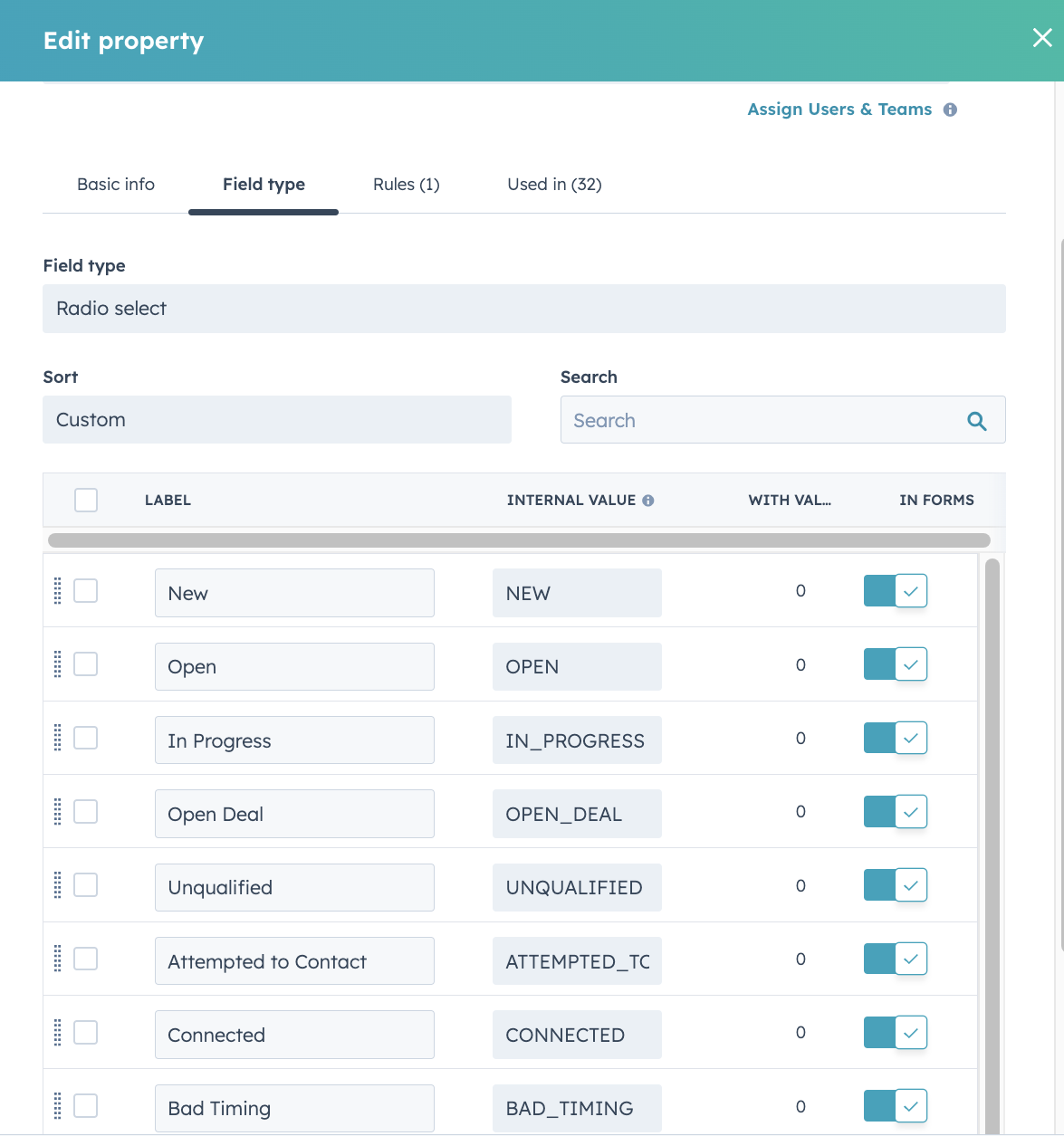
How to adjust your lead statuses in settings.
With your lead statuses defined, you can also build views in the CRM for your team, such as “New leads” or “Leads with Open Deals.” These views in the contact object will make it easier for your team to organize the contacts they own and any necessary follow-ups.
Contacts by lead status view in HubSpot
For sales leadership and pipeline reviews, you can also use the Lead Status field in reports and dashboards. This will help you understand your SQL-to-opportunity or SQL-to-unqualified rates.
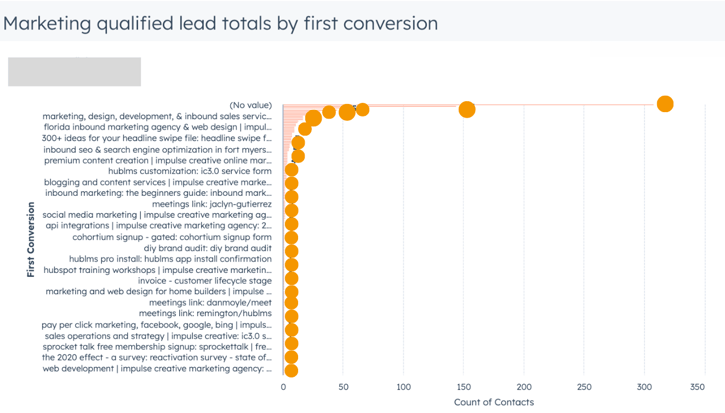
An example of a report created from lead status data.
4. Unclear lifecycle stages.
Lifecycle stages are your business’s perspective on where contacts are in your marketing and sales processes. Contacts can enter in any stage from subscriber to evangelist and may or may not ever actually buy your product or service.
Segmented lifecycle stages ensure the right content, communication, and activity are associated at the right time and within the right context.
Blurry lifecycle stages can lead to confusion of ownership between sales and marketing and inconsistent activity at stages.
Strategic Fix
First and foremost, the marketing and sales teams should be aligned on what exactly each lifecycle stage entails, who owns it, and what messaging & communication should be deployed at each stage.
Here are some examples of areas to be aligned on across teams for lifecycle stages:
- What information and actions qualify a MQL and SQL?
- What (and when) should the marketing team handover to the sales team for an SQL?
- How many times should an SQL be contacted? In what channels?
- When should a contact go straight to a sales rep instead of through a BDR/SDR?
- Are there any instances in which automation shouldn’t be used and a team member needs to qualify manually?
HubSpot Setup
HubSpot has default lifecycle stages (but you can also customize it to your own business). We’ve used Taylor Swift references to make our process fun - why not!
Use lifecycle stages within HubSpot to track how contacts/companies are moving forward within your sales flow. You can set up automatic assignments of lifecycle stages based on certain actions and trigger subsequent workflows and sequences (more on those later). Using an automated life cycle stage can help take subjectivity and manual action out of the process.
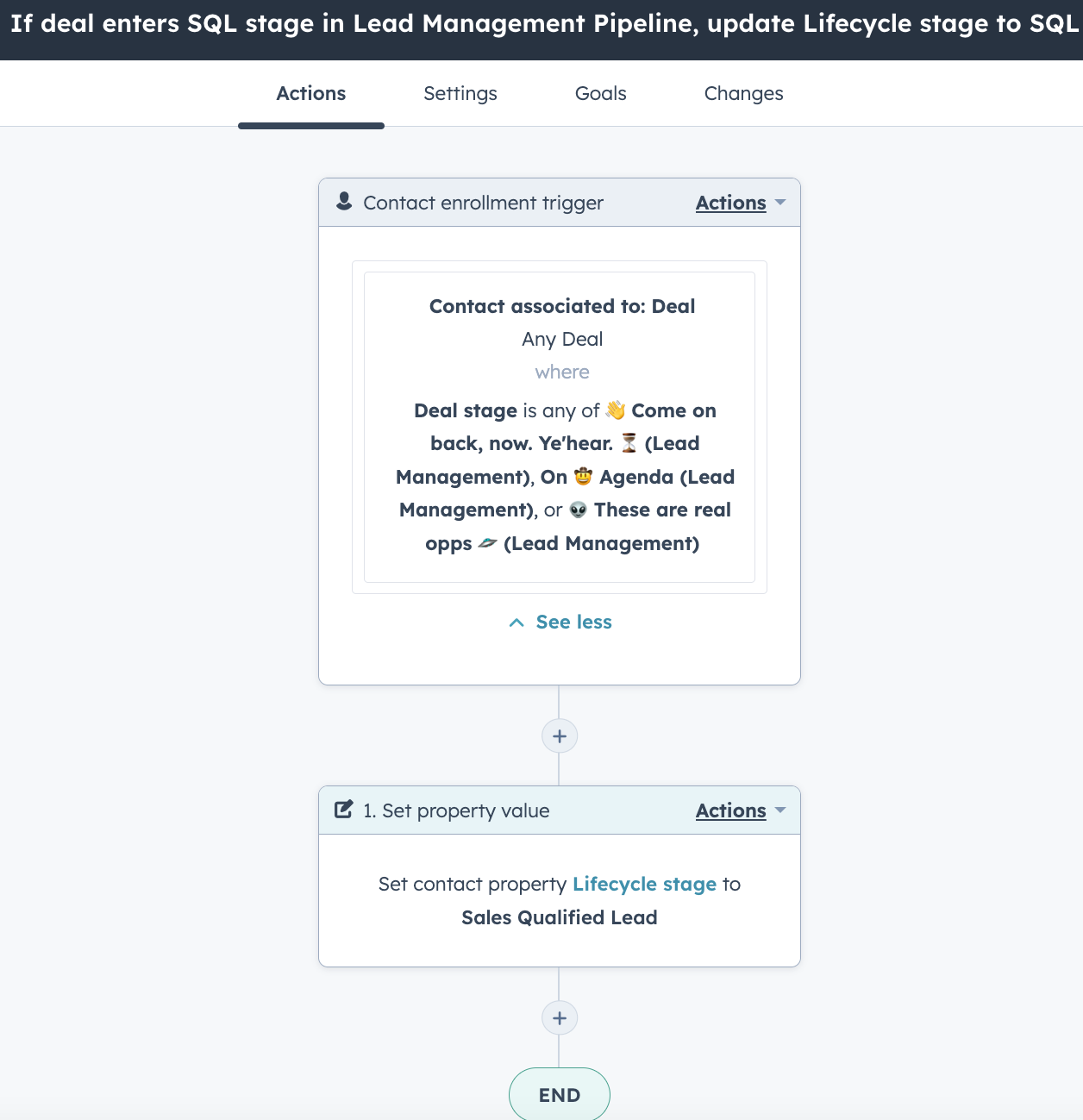
An example of one of our automatic lifecycle workflows.
5. Gaps in Training, Expectations, and Day-to-Day Work
From initial onboarding to continuous development, training is a crucial piece of a successful sales program.
Sometimes, the problem rests in top-down expectations for what the sales process looks like.
- Does leadership expect certain ideas or language to be used in the sales process that a) isn’t impactful to the client or b) isn’t realistic to be deployed or c) the team doesn’t even know about?
- Did the training material use language that the sales team doesn’t use colloquially?
- Does leadership expect a certain number of touchpoints but the sales playbook recommends a different number?
Other times, the problem exists in the resources that are available for the sales team ranging from non-existent to never updated to difficult to find.
Expectations should be consistent across team members to ensure exact follow-through on leads. If each team member is doing things a little differently, how can you be sure what in your process works and what doesn’t?
Strategic Fix
HubSpot’s playbooks, snippets, and sequences offer a team-wide, transparent, and flexible plan for sales teams and leadership to collaborate on to create the best training and implementation possible.
These tools offer reporting and tracking to objectively gauge success and edit to change as you see fit.
Additionally, the automation available in sequences standardizes parts of the sales process, so that your team can hone their interpersonal selling skills rather than use their typing skills.
HubSpot Setup
Starting with the first tool to help bridge the training and understanding gap, playbooks.
Playbooks allow you to standardize notes and questions for various interactions from prospecting to discoveries. When you are in a contact record, you can pull up the playbook and the information you input will automatically be stored into the contact record.
You can use playbooks to standardize data entry, note-taking, and information gathering so you have consistent takeaways from meetings. To do this, you’ll use actual contact, company, or deal properties in your playbooks themselves. As the team runs the playbook, the data in your CRM records will be automatically updated.
(Bonus: this kind of controlled data entry can have pretty cool implications for automation for quotes, contracts, documents, and more. Talk to us if that sounds interesting!)
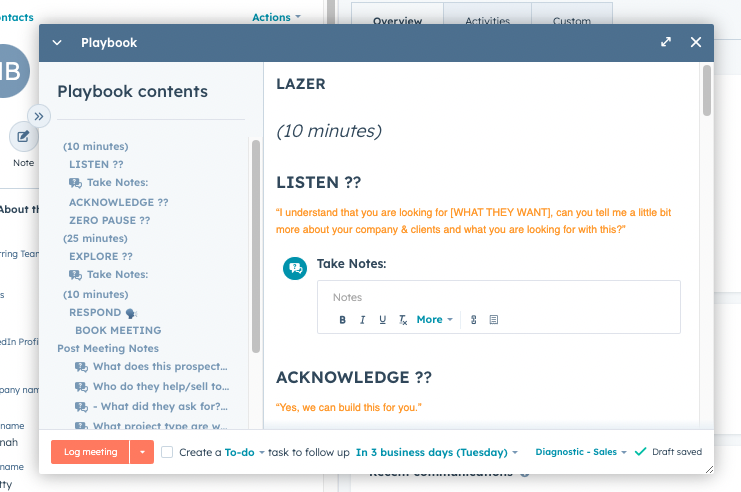
Impulse Creative’s LAZER playbook as seen as a pop-out in a contact record.
 |
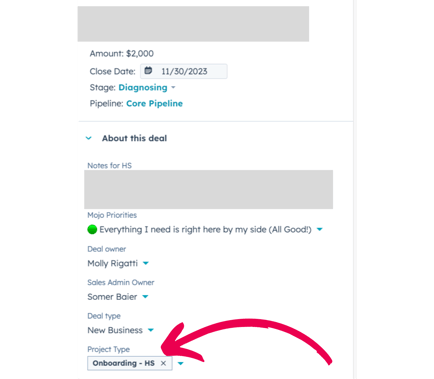 |
When you update a property in a playbook, it gets updated in the contact, deal, and/or company record.
Next, snippets take text that is consistently used in emails, notes, tickets, and deal records and standardize them with uniform, predetermined language that can be deployed directly in Hubspot with a hashtag shortcut. Snippets can be used in places such as one-to-one emails, CRM notes, and quotes.
This is great for sharing the best messaging for common responses with the whole team. Additionally, because the information is accessible for all to see and to create, there can be a democratized approach to creating language that is both colloquial to the sales team and approved by management.
Here are some use cases you’ll love:
- When the marketing team creates a new resource or explainer, it can be added to an existing snippet to provide the most up-to-date answer to common resource requests.
- When the legal team needs to refine messaging around contracts, they can approve and add that language to the necessary snippets so the information is always accurate.
- When sales reps need some pre-call questions answered to make sure they’re bringing the right crew to a first or second meeting, a snippet is a great way to ensure the right questions are sent to each inquiry.
- When you offer many products and services, your marketing and sales team can collaboratively create a snippet description of each that can be folded into a custom email for each inquiry.
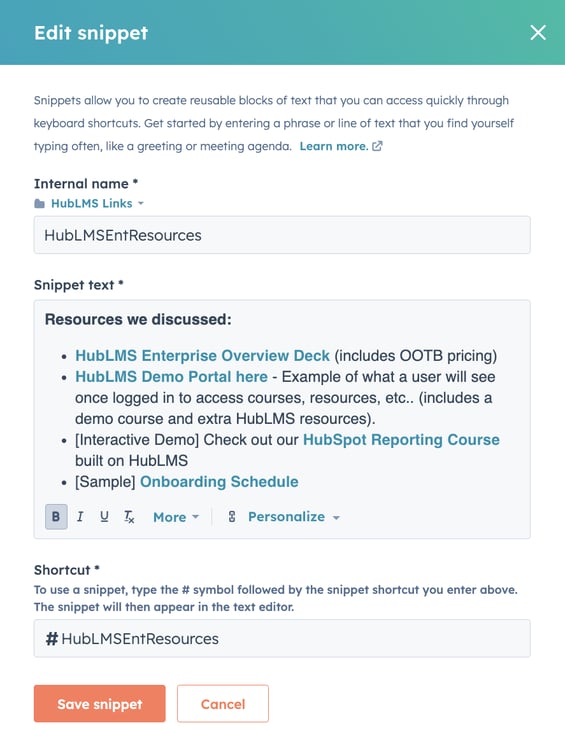
An example snippet regarding resources for one of our most popular products, HubLMS.
Finally, sequences. In HubSpot, sequences automate a series of internal tasks and prospect-facing emails. They can be sent to individuals at a sales rep’s discretion or sent via automated workflow to contacts who meet certain criteria such as no-showing a meeting, reaching out for a first meeting, attending a trade show, or visiting a service page. Sequences can use your approved email templates and help to unify your lead follow-up procedures.
Read more about the sales sequences tool here.
As of September 2023, you can analyze each step in a sequence to better refine timing, messaging, and audience.
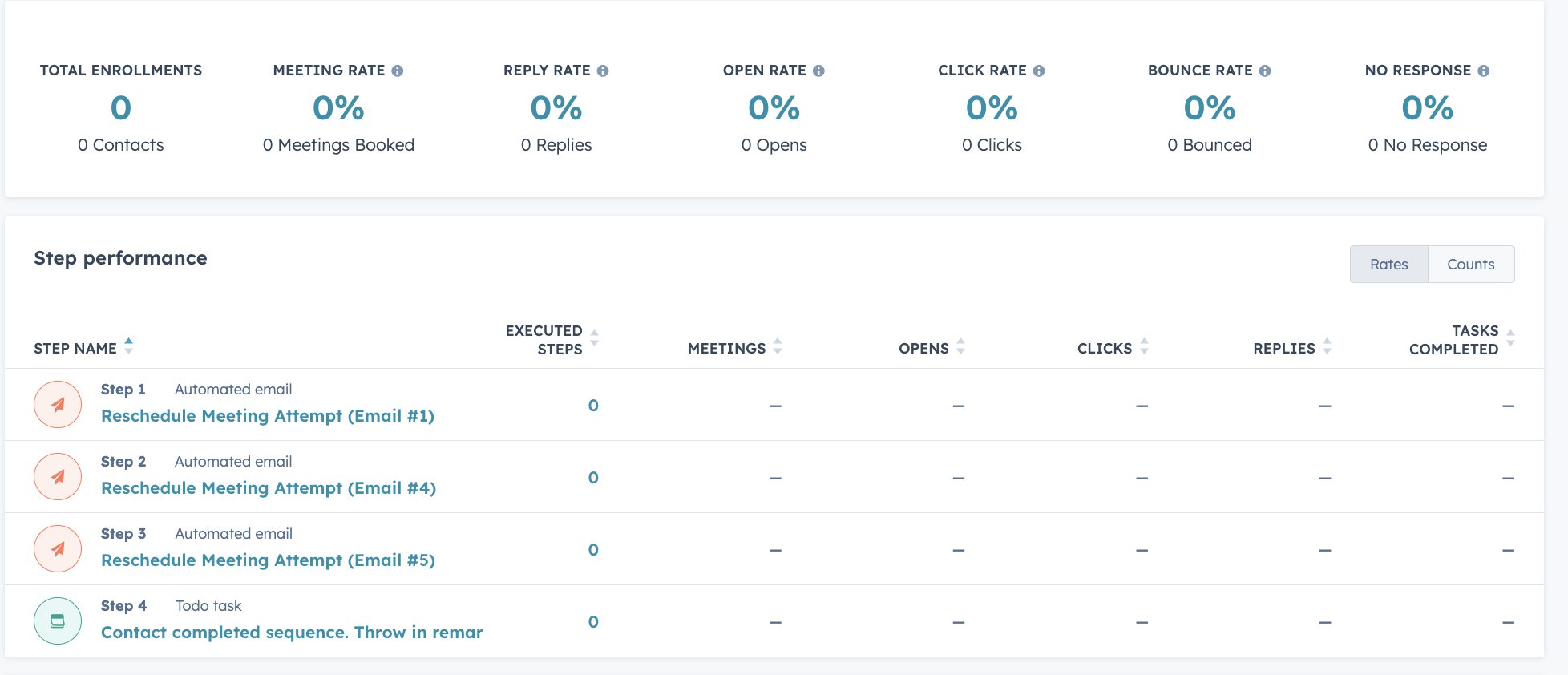
An example sequence for a no-show meeting.
6. Non-automated lead routing.
Lead routing is the process of connecting your reps with the ideal lead with the most accurate information for them to develop a relationship.
Whether you have field representatives or not, lead routing can be a pain point when it leads to an imbalance of workloads or an incorrect match of rep to product/service/industry/etc.
Imagine: sales reps fight over leads as soon as they enter the CRM.
Call it commission for the hungriest.
Or, finding a replacement sales rep when someone is unexpectedly out of the office derails progress.
Valuable time can be spent connecting leads to the best (and most available) rep that can be better spent improving those interactions.
Strategic Fix
Automatic lead routing solves many problems that manual lead routing creates.
- As the name suggests, it happens automatically without direct action. Remove that task from your to-do list!
- It standardizes the process to prevent human error or bias. This means you can more effectively evaluate the criteria of matching leads with reps based on repeatable and objective data. You can better understand which teams need to work with which leads when and why.
HubSpot Setup
Setting up automated lead routing comes down to a perfect blend of properties, workflows, and people.
You’ll first need to examine how leads are input into your system and what properties are most important to discern who should get matched with whom.
Properties don’t necessarily need to be tied to a form. Properties can be filled in from LinkedIn Sales Navigator, HubSpot insights, or basic research.
Once you understand how contact properties get into your system, you’ll next need to determine the criteria for matching (e.g. size of company, how the lead came in, location of company, pain point, availability, and industry).
After you have determined which criteria match will dictate which team member(s) get certain kinds of leads, set up a workflow that uses those criteria to direct the lead to a certain team or person. Workflows can even rotate those leads between a set of owners, helping you keep lead assignments equal. In addition to actually assigning the record to an owner, the same workflow can then trigger a task for the appropriate sales rep to send an email or a call.
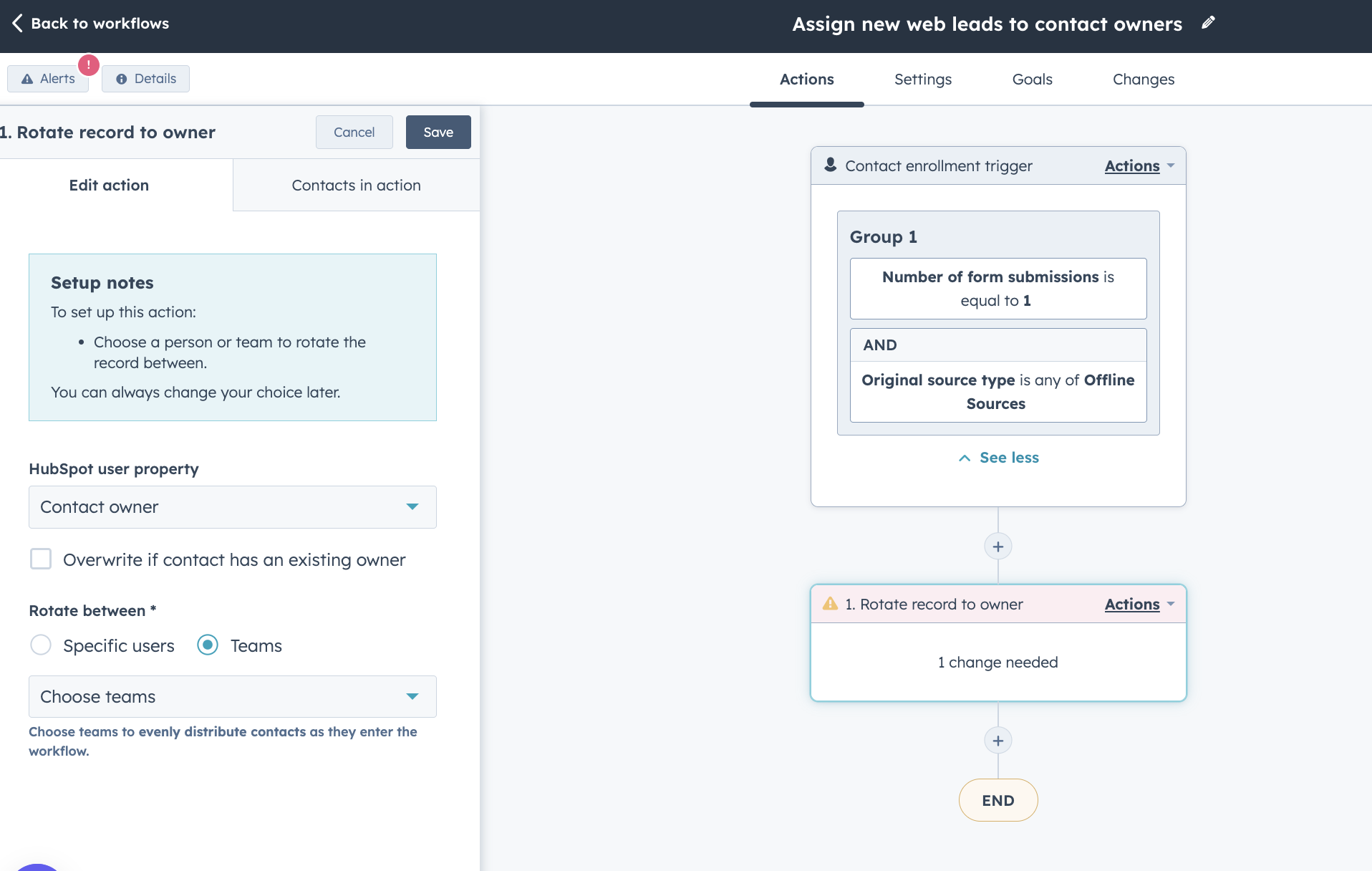
An example workflow that will assign or rotate sales reps for leads who enter on a certain form.
7. Incomplete Information
Not knowing what you need to know at the right time can be a deal breaker and cost you business.
When leads give you information via your website, they expect that you won’t ask them to repeat their answers several times. Similarly, when leads input their information via their social media or company website, it can appear disjointed when your reps ask seemingly obvious questions that can be found on an About Us page.
If your customer success team asks a question that the sales team already asked and knows the answer to you’ll come off as siloed.
Strategic Fix
HubSpot has a myriad of solutions for sharing information to reps and within teams.
The important takeaway for this pain point is that what happens in HubSpot needs to stay in HubSpot - not in a personal Google Drive, not in a notebook that gets taken home every day in a backpack, and certainly not just stored in someone’s brain.
The CRM should be the source of truth for consistent information.
Your team should strive to overnotate and over-explain for the next person who might need to know something.
HubSpot Setup
There are two phenomenal insight tools within HubSpot’s Sales Hub: HubSpot insights for company data and LinkedIn Sales Navigator.
HubSpot Insights uses third-party data, web crawling, and crowdsourcing to provide extra insight into your contact and company records using information tied to the email domain. Extra info includes annual revenue, industry, social media, location, etc..
Use this to learn more about leads and improve personalization in communication without spending extra research time. You can read more about HubSpot Insights here.
Note: if you have a non-HubSpot CRM integrated with your portal, check with your CRM admin prior to turning on HubSpot Insights.
LinkedIn Sales Navigator requires a connection from LinkedIn to HubSpot. Once that happens, you can view additional contact/company information, commonalities, mutual contacts, and related leads.
Use this to learn more about leads and improve personalization in communication without spending extra research time.
For communication among team members and departments, notes and activity within the CRM is a non-negotiable source of truth.
You can manually and automatically log calls, emails, meetings, LinkedIn messages, WhatsApp messages, text messages, mail, and notes within contact or company records.
Bonus! You can pin a note at the top of the CRM for everyone to see.
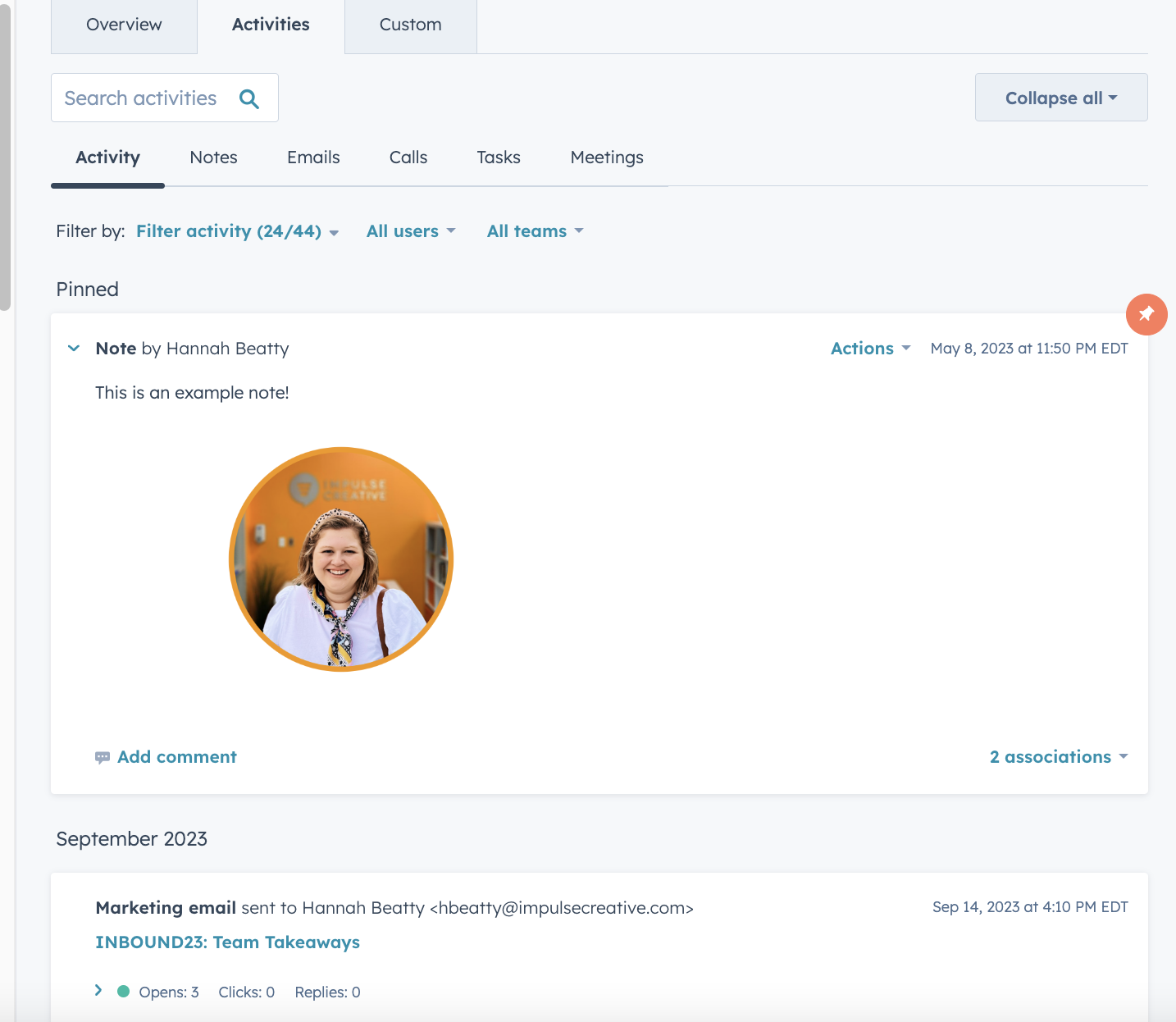
Example CRM notes and activity.
Finally, files and documents are key for inter-team member collaboration and communication. Documents should be saved directly within the Sales and Marketing file manager for all users to use and see.
When documents from Sales are sent, you can actually see the activity of visitors who receive the link including when they open the document and how often they look at it.
Psst! Use the activity record of document-opens to trigger a sequence prompting a call or email. When you’re on your prospect’s mind, it doesn’t hurt to give them a call!
8. Unclear Reporting
Reporting is crucial to the health of your operations, yet can be plagued with a number of illnesses: not transparent, not tracking the right (re: useful) information, and not automatically updated with CRM-connected information to name a few.
Reporting is a common woe of Sales Ops. A study in 2021 from LinkedIn showed that 58% of Sales Ops pros face data-related challenges.
Strategic Fix
Conducting regular reviews of your sales progress and deals is the cure to any confusion on your sales team.
In 1:1s and team meetings, use the following Sales Hub tool to provide insight into progress, goals, and new opportunities.
HubSpot Setup
HubSpot’s deal pipeline tool is a visual representation of your deal stages and the deal information all in one place. Create multiple pipelines such as lead, core, upsell, and retainer to fit your business needs.
Bonus! Deal tags can add an additional layer of visual representation to ownership, timeline, type of product/service, etc.
Use this to get a bird’s eye view of momentum, next steps, opportunities, and challenges with your deals. This is used as the source of truth for the current deal status. When the entire team can see and use the pipeline, you can get better collaboration among peers and supervisors.
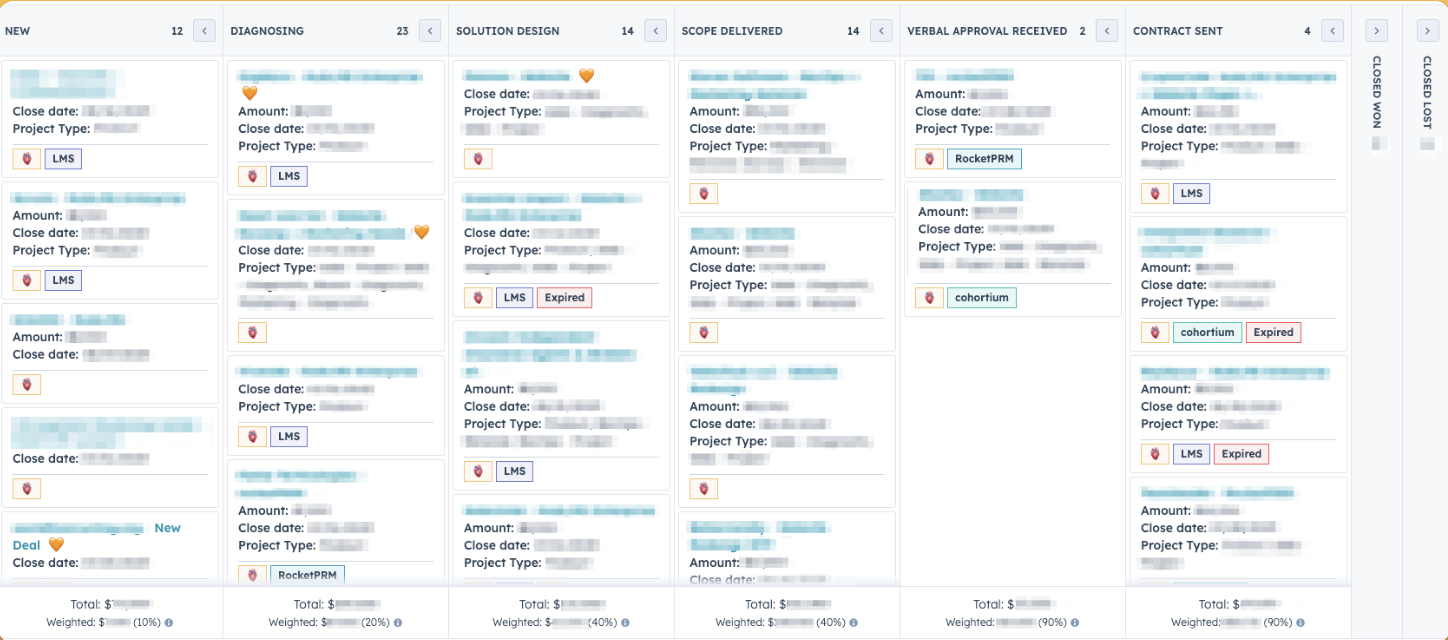
Example deal pipeline.
Dashboards are another tool to layer onto the deal pipeline. Dashboards can report and display all types of stories related to user and lead behavior, communications, conversions, types of deals, account-based marketing, referrals, etc.
HubSpot has an array of dashboard templates with the ability to customize to your needs.
You can use this to track and benchmark goal progress and improve your marketing and sales efforts when you know how tactics have worked in the past.
Our team likes to use the dashboard to see team referrals, total close/won by quarter, open deals by pipeline, and product deals by month.
Finally, the forecast tool is great for 1:1 coaching and progress tracking.
The forecast tool is a visual tool that teams and managers can use to track goal and quota progress.
Bonus! Set up goals for your team such as deals created, calls made, meetings booked, or revenue.
9. Too Much Admin Work; Not Enough Brain Work
The final sales op pain point for us to cover is your sales team doing too much admin work and not enough selling.
Keeping a clean CRM and responding to emails and requests promptly are quintessential to the sales rep role. However, that doesn’t have to mean these tasks should take up 60% of your reps’ work day.
Strategic Fix
The administrative work needs to get done, but there’s a more efficient way to go about it when you use HubSpot’s tools to prioritize and automate.
Because HubSpot’s sales tools are all interconnected to the CRM, task management simply makes more sense with the context embedded right in the task. Additionally, HubSpot’s task management tools, provide yet another layer of transparency for managers and team members to know exactly what’s going on.
HubSpot Setup
The prospecting workspace is a newer addition to HubSpot Sales Hub, and it is already a core element of our sales team’s day-to-day routine.
The tool allows you to see high-priority items at a glance including leads who need a response, tasks, and overdue tasks. You can also see who you’re meeting with and their exact contact record to help with meeting notes and prep.
Another common time suck that is solved with HubSpot is meeting links. You can create one-on-one, group, and round-robin scheduling pages that automatically connect to calendars.
Bonus! You can add a payment link for meetings that cost money such as training or consultations.
Use this to save time to book meetings rather than manually going back and forth to find a desired time.
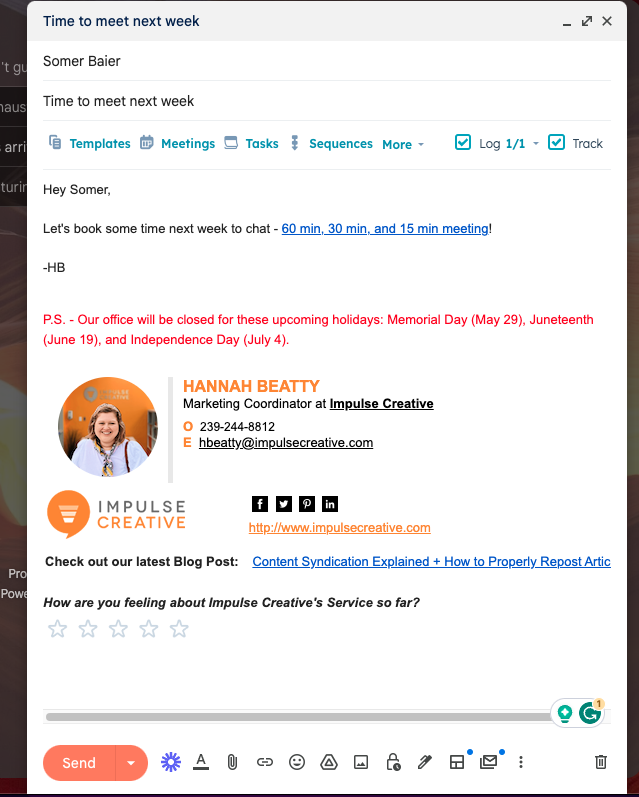
An example email that sends the recipient to your team’s calendar, which automatically syncs with their availability.

The scheduling page is shown when the recipient clicks on the link above.
Plan smarter sales with Impulse Creative
Throughout this blog, we’ve shown a variety of ways, 19 to be exact, that HubSpot automation and organization can completely transform your team’s workday.
In this age of automation and AI, it can be easy to assume that these tools may one day replace a sales representative, but that’s not so.
Instead, these tools widen up your sales rep’s time to be more human than ever before. CRM context makes conversations richer, automation makes interactions frictionless, and data makes the team smarter for the next sale to come.
If the end of this blog leaves you intrigued, but a tad bit overwhelmed, we are here to help.

.png?length=450&name=Sales%20Ops%20Blog%20(1).png)

